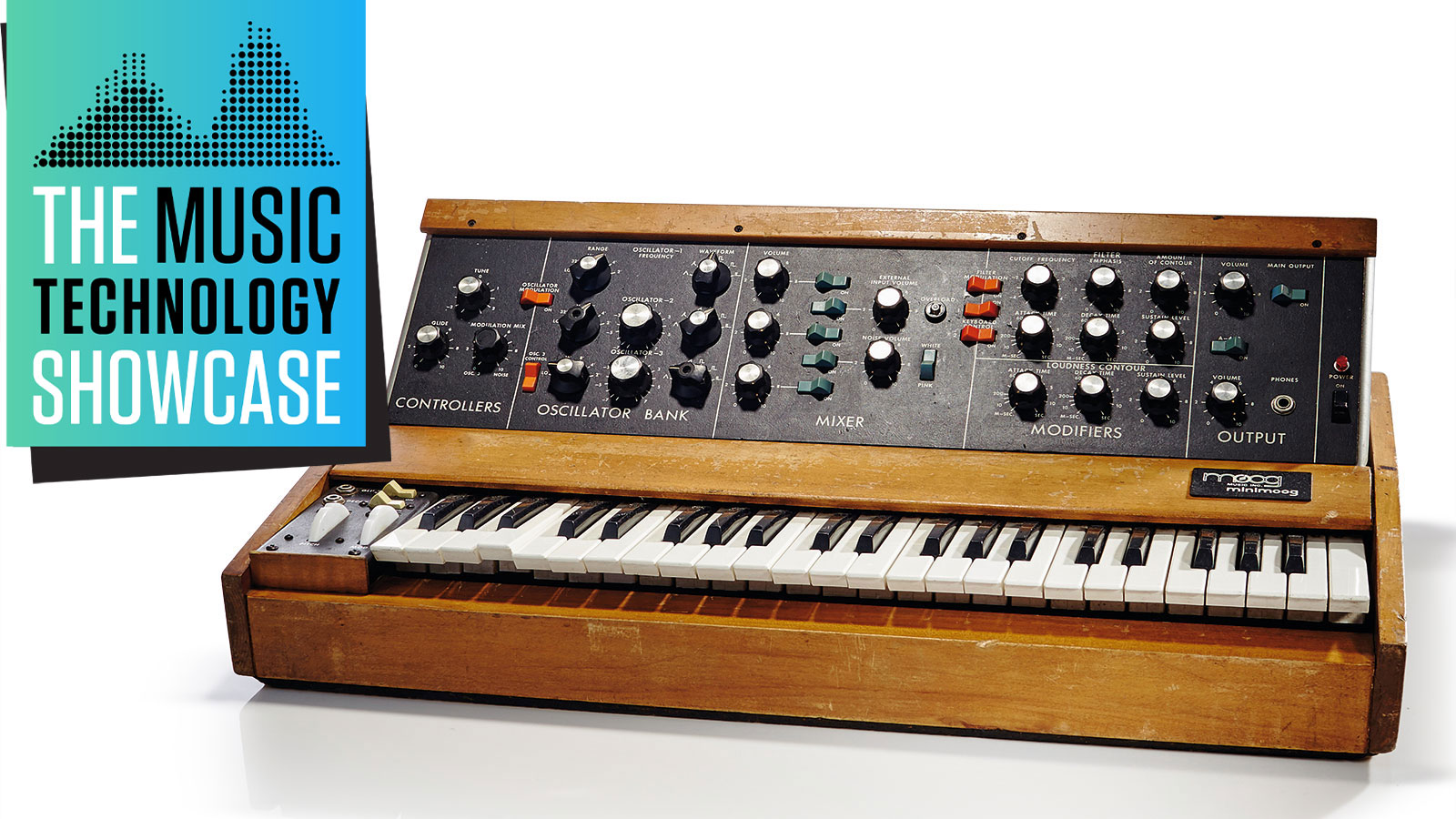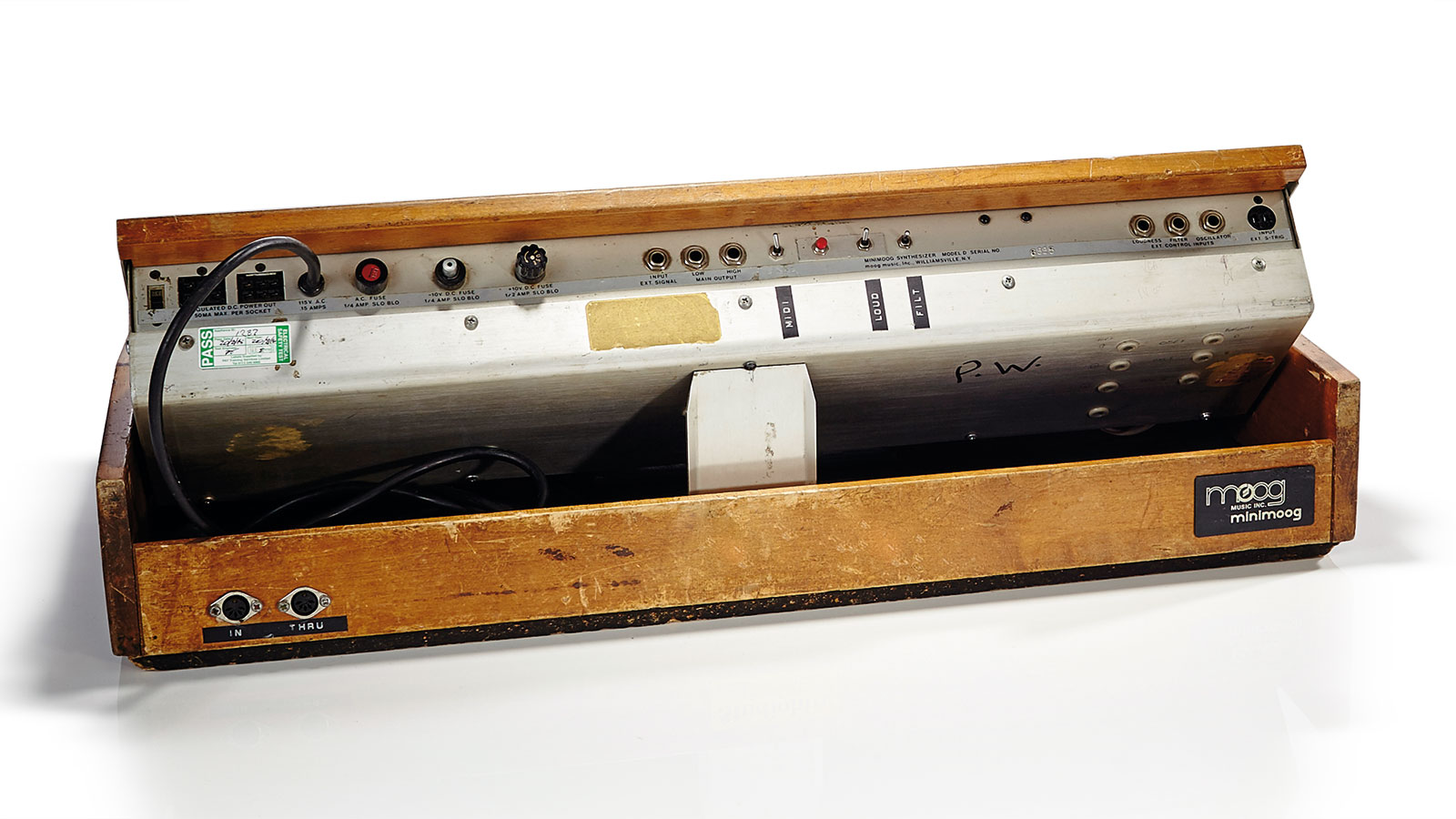Vintage music tech icons: Moog Minimoog Model D
The Minimoog forever defined the shape and sound of every synth that followed

Music Tech Showcase 2021: The words ‘revolutionary’ and ‘groundbreaking’ get bandied about so much they’ve all but lost their impact. You’d be forgiven, then, for not appreciating how truly accurate they are when used to describe an innovative product like the Minimoog. Few instruments have had such a significant impact as Moog’s original Minimoog Model D.
Before the Minimoog, synthesizers were costly, lumbering behemoths restricted to the professional recording studio and the halls of academia. Few working- class musicians could afford to get even a look at a synthesizer, never mind owning one. Even if they could, those early modular synthesizers were complex monstrosities, festooned with hundreds of knobs and switches and obscured by a veritable jungle of patch cables. It was heady stuff, suited more to the university boffin than the average fake book-toting organist. The Minimoog changed all of that.
The prototype was built by Moog engineer Bill Hemsath during his lunch breaks utilising a sawed-off keyboard, pre-existing and rejected modules and various spare parts. Hemsath simply wanted a portable, pre-patched version of Moog’s modular instruments that he could use for demonstrations.
Hemsath’s brainchild couldn’t have come at a better time. The novelty of modular synthesizers was wearing thin and Moog’s sales were dwindling. The company had never actually seen itself as a proper part of the musical instrument business, and the Minimoog represented a potential way in.
An instant classic, Robert Moog himself once stated that the company figured on selling maybe 100 Minimoogs before updating the design
With this in mind, the company’s engineers set about transforming Hemsath’s ideas into a marketable production unit. After two more prototypes (Models B and C) and a handful of rejected ‘space-age’ enclosures, the Minimoog was at last refined into the now-familiar Model D.
An instant classic, Robert Moog himself once stated that the company figured on selling maybe 100 Minimoogs before updating the design. Initially, it looked as if they might have overestimated that figure. The Mini was first unveiled at the Audio Engineering Society convention in 1970 and, more importantly, the National Association of Music Merchants convention in June 1971.
The Minimoog was demonstrated to instrument distributors and retailers. Unfortunately, the now-venerable synthesizer was met with disinterest and confusion by NAMM’s attendees. They didn’t know what to make of this strange instrument with its array of knobs and switches labelled with obscure technological terminology.
Get the MusicRadar Newsletter
Want all the hottest music and gear news, reviews, deals, features and more, direct to your inbox? Sign up here.
That might have been the end of the Minimoog – and Moog – were it not for dynamic salesman David Van Koevering. A brilliant marketeer, Van Koevering staged sales events like the ‘Island of Electronicus’, a weekly performance on a man-made island and advertised through fast food chain Taco Bell. Van Koevering played Moog instruments to sell-out crowds, some of whom bought instruments of their own. The events were so popular that Van Koevering was soon holding them five nights a week.
David Van Koevering was devoted to the Minimoog’s success. With his Cadillac packed to the brim with Minimoogs, he took his sales pitch to the road, talking directly with retailers and putting the Mini into the hands of gigging musicians. The tactic worked and soon Minimoogs were trundling out of the Moog factory at a rate of 300 per month. It didn’t hurt that performers like Keith Emerson, Jan Hammer and Rick Wakeman had taken a shine to the instrument.

Path of glory
The Mini’s signal path set the template followed by synthesizer manufacturers to this day. It starts with three powerful oscillators, the third of which can be employed as a modulation source (most often for LFO duties, but it shouldn’t be overlooked as an audio-rate mod source).
Each oscillator offers a switchable audio range from 32’ all the way up to 2’ and all of them can be switched into a sub-audible ‘LO’ rate. All of the usual waveforms are here: all three oscillators provide ramp/reverse sawtooth, triangle and square waves.
Oscillators 1 and 2 have a combination saw/triangle shape, replaced in Oscillator 3 by a sawtooth. Though the Mini lacks pulse width modulation, there are two different hard-wired pulse waves from which to choose.
The oscillators are shunted through a mixer section where they can be individually switched in and mixed. Noise (pink or white) is also available via the mixer, as is an external input situated around back. Noise is also available as a modulation source, where it can be blended with Oscillator 3.
The Minimoog’s trio of rich Moog oscillators, Moog’s famous Ladder filter and snappy envelopes combine to produce an unbeatable sound
The mixer is routed through the classic 24dB resonant low-pass filter. The filter can be modulated by Oscillator 3, the 44-note keyboard, or a dedicated ADS envelope generator – the release time is controlled by the Decay knob. Another such envelope is used for amplification.
Other niceties include glide, pitch and mod wheels, headphone jack (with dedicated volume control) and a built-in A-440 tone generator for tuning.
With 21 knobs and 22 switches, the Mini offers just enough hands-on controls to keep users interested, without overwhelming them with options.
This was important back when few musicians knew what a filter was. The Mini was built before menus and modulation matrices – what you see is what you get. If it had been made by anyone else, we might not be discussing it today.
However, the Minimoog’s trio of rich Moog oscillators, Moog’s famous Ladder filter and snappy envelopes combine to produce an unbeatable sound. The basses are huge, yet well-defined, the leads piercing, yet pleasing.
There is something undefinably special about the sound of the Minimoog. There’s a reason it has become the standard with which analogue sound is measured. A joy to play and to program, the Minimoog has rightfully earned its status as one of the most coveted and revered synthesizers of all time.
Verdict
The undisputed champion of vintage synthesizers – incredible sounds and eminent playability.
Original RRP £1,150 | Used from £2,000
Buying a used Minimoog Model D
Three things you should know to ensure a good Minimoog purchase
1. Many of the earliest Minis were built while the company was still learning how to handle mass production. Robert Moog himself claimed that the later units were superior. It is still hotly debated but the older units are likely to be less dependable.
2. Units before serial number 10175 have a less stable oscillator design. Many suggest that the earlier oscillator boards sound better, while Dr Moog favoured the later ones. Many early Minis were retrofitted with a later board; pop the hood for a look.
3. Even a knackered Minimoog is salvageable if you can afford to have it restored. Most of the components are readily available. You can even buy all new wooden cabinetry.


Future Music is the number one magazine for today's producers. Packed with technique and technology we'll help you make great new music. All-access artist interviews, in-depth gear reviews, essential production tutorials and much more. Every marvellous monthly edition features reliable reviews of the latest and greatest hardware and software technology and techniques, unparalleled advice, in-depth interviews, sensational free samples and so much more to improve the experience and outcome of your music-making.










